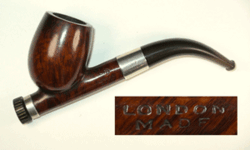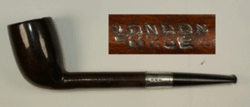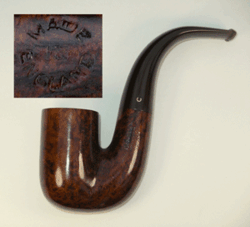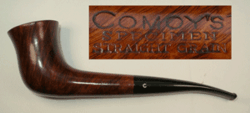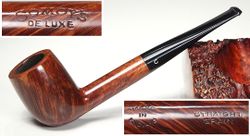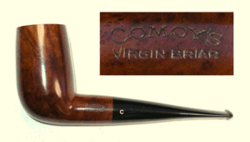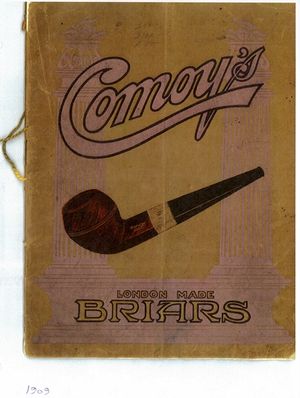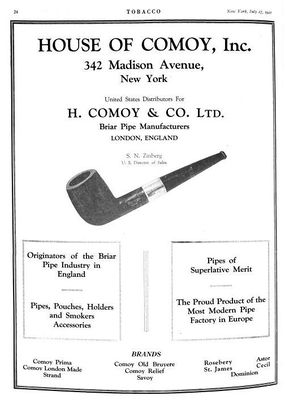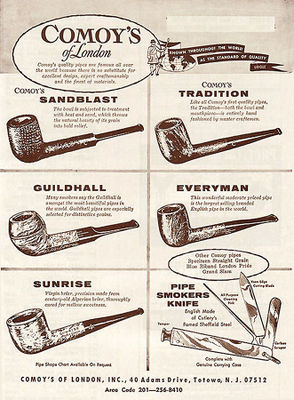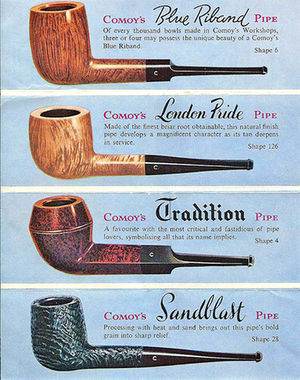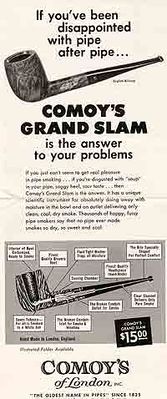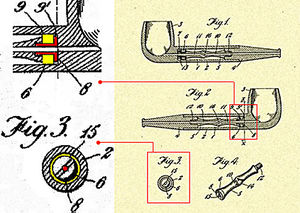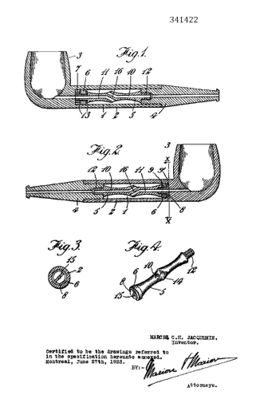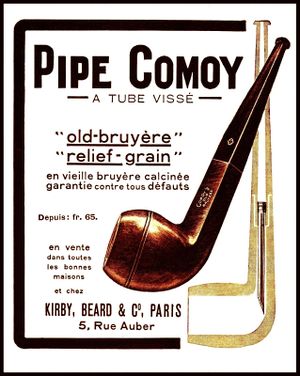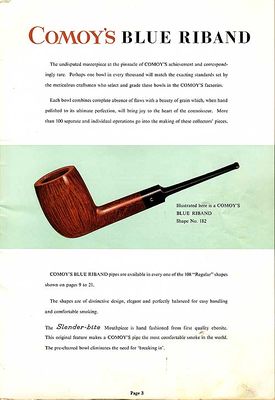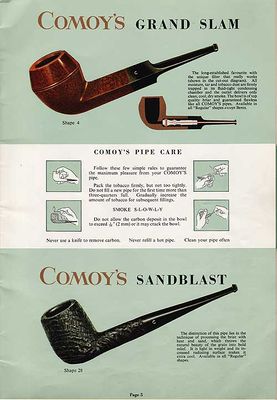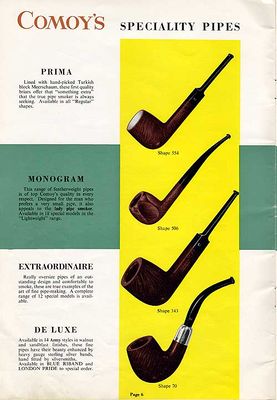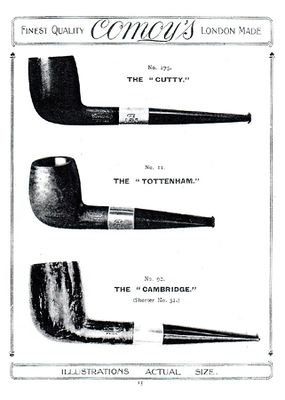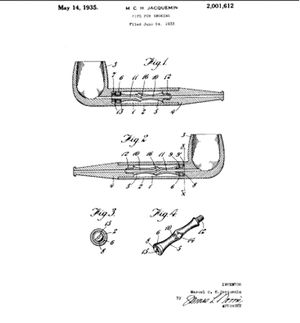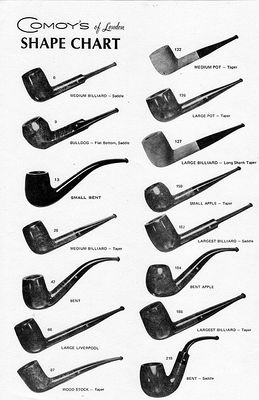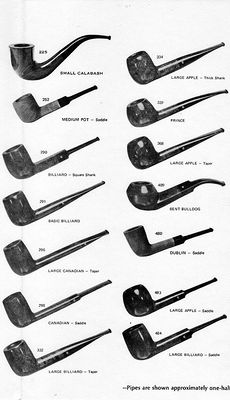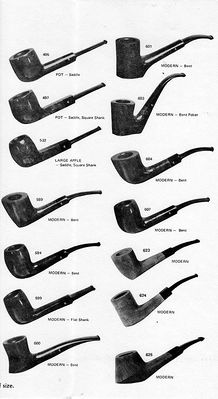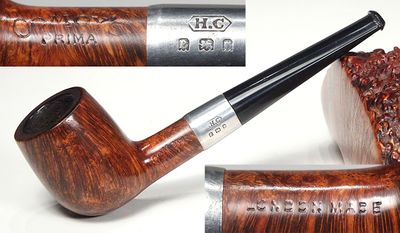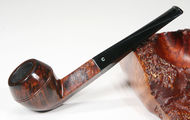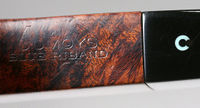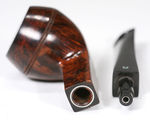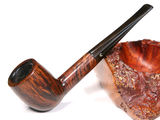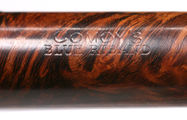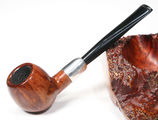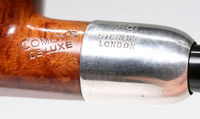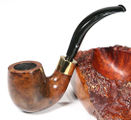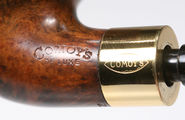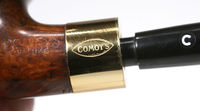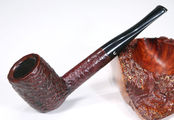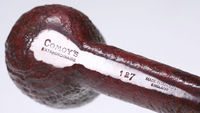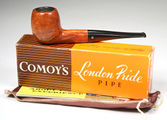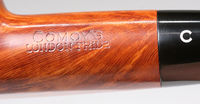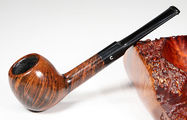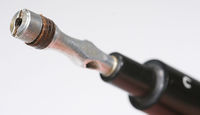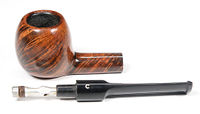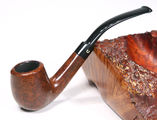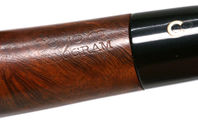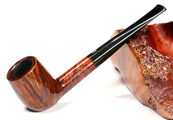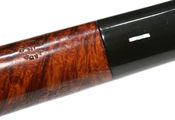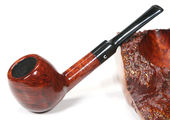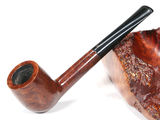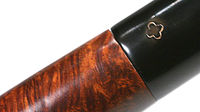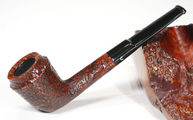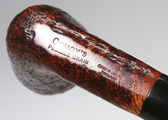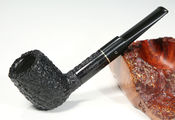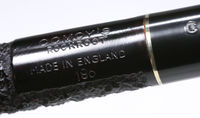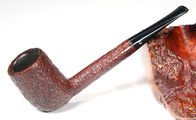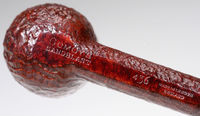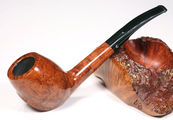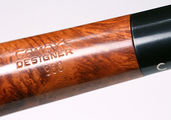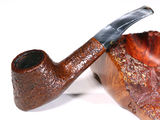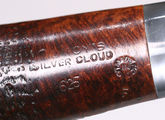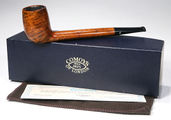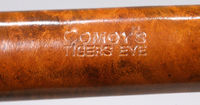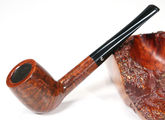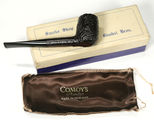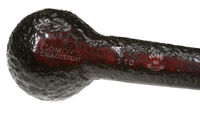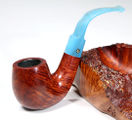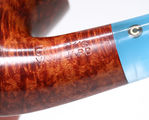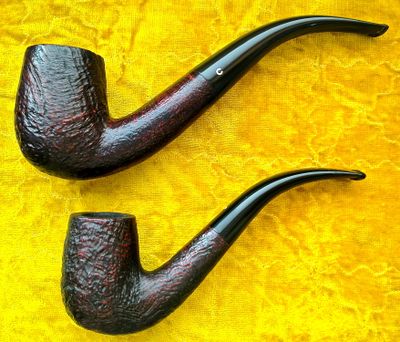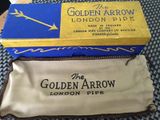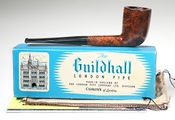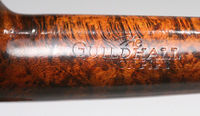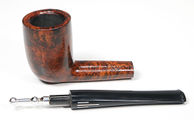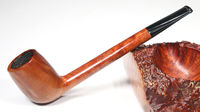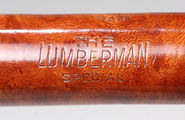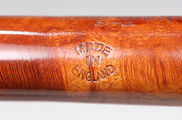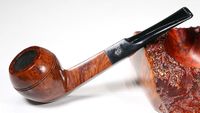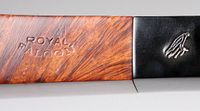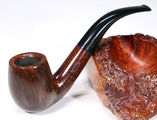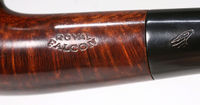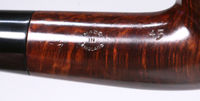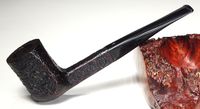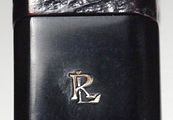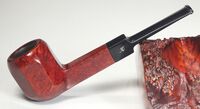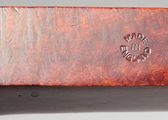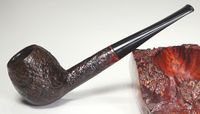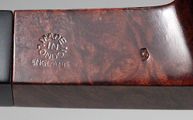Comoy's/fr: Difference between revisions
(Created page with "Il fut aidé au début par quelques uns de ses frères et autour de 1891 fut rejoint par ses deux neveux, Louis et Charles Chapuis. Louis prit le nom de ses parents adoptifs....") |
(Created page with "En 1929 la compagnie fut invitée à rejoindre Cadogan Invesments Ltd. On a connu cet épisode comme « La Fusion » qui a concerné la Compagnie Civic et les pipes Oppenheim...") |
||
| Line 26: | Line 26: | ||
En 1914 les différents partenaires, Henri Comoy et ses neveux Louis et Charles, déposèrent les statuts de H.Comoy & Co ltd. Avant la guerre de 14/18 Henri avait également été rejoint par ses fils, Adrien et Paul, qui étaient nés après l’arrivée de ses neveux à Londres. En 1921, Sam Zinberg fut nommé directeur des ventes pour les USA et '''The House Of Comoy''' fut créée. Henri Comoy décéda en 1924 à 74 ans laissant la compagnie aux mains de Louis et Charles. | En 1914 les différents partenaires, Henri Comoy et ses neveux Louis et Charles, déposèrent les statuts de H.Comoy & Co ltd. Avant la guerre de 14/18 Henri avait également été rejoint par ses fils, Adrien et Paul, qui étaient nés après l’arrivée de ses neveux à Londres. En 1921, Sam Zinberg fut nommé directeur des ventes pour les USA et '''The House Of Comoy''' fut créée. Henri Comoy décéda en 1924 à 74 ans laissant la compagnie aux mains de Louis et Charles. | ||
En 1929 la compagnie fut invitée à rejoindre Cadogan Invesments Ltd. On a connu cet épisode comme « La Fusion » qui a concerné la Compagnie Civic et les pipes Oppenheimer ainsi que leurs sociétés associées. Cette fusion avait été faite dans le but de faire travailler ensemble les différentes compagnies. | |||
In 1937 a new, model and splendidly-equipped factory was opened in Pentonville Road to accommodate additional staff of several hundred. The next generation had joined the firm by the time the Second World War broke out. Louis Chapuis Senior joined in 1938 and Pierre Comoy in 1947 after service in the Royal Armoured Corps. | In 1937 a new, model and splendidly-equipped factory was opened in Pentonville Road to accommodate additional staff of several hundred. The next generation had joined the firm by the time the Second World War broke out. Louis Chapuis Senior joined in 1938 and Pierre Comoy in 1947 after service in the Royal Armoured Corps. | ||
Revision as of 15:58, 10 February 2019
La base de cet article est tirée de A History Of Comoy's and A Guide Toward Dating the Pipes écrit par Derek Green. Cet article a été publié dans la revue The Pipe Collector en juin 2006, la revue officielle de la Société Nord Américaine des collectionneurs de pipe, et est utilisé ici avec son autorisation. C’est une organisation importante– que j’envisage de rejoindre.
François Comoy et ses frères ont commencé à fabriquer des pipes (probablement en
terre, buis ou en hêtre) en 1825 dans la petite ville monastique de Saint-Claude dans l’Est de la France. Claude et son fils Louis découvrirent que la bruyère avait des caractéristiques nettement supérieures, et à partir de 1848 n’utilisèrent plus que ce bois pour faire leurs pipes. En 1879 le fils de Louis, Henri, né en 1850, se rendit à Londres avec un petit sac d’outils mais une vaste expérience. Henri mit sur pied une petite usine à Seven Dials, actuellement Cambridge Circus. Il fut l’un des premiers installés à Londres à se lancer dans le commerce des pipes de bruyère et on lui attribue la paternité de l’inscription London Made.
Il fut aidé au début par quelques uns de ses frères et autour de 1891 fut rejoint par ses deux neveux, Louis et Charles Chapuis. Louis prit le nom de ses parents adoptifs. Vers 1895 l’affaire avait dépassé le site de Seven Sisters et une nouvelle usine avait été construite à Newcastle Place, Clerckenwell. A partir de 1905 le marché s’étendit à l’Amérique et cette activité supplémentaire nécessita de construire une nouvelle usine en 1913 au 72 Rosebury Avenue.
En 1914 les différents partenaires, Henri Comoy et ses neveux Louis et Charles, déposèrent les statuts de H.Comoy & Co ltd. Avant la guerre de 14/18 Henri avait également été rejoint par ses fils, Adrien et Paul, qui étaient nés après l’arrivée de ses neveux à Londres. En 1921, Sam Zinberg fut nommé directeur des ventes pour les USA et The House Of Comoy fut créée. Henri Comoy décéda en 1924 à 74 ans laissant la compagnie aux mains de Louis et Charles.
En 1929 la compagnie fut invitée à rejoindre Cadogan Invesments Ltd. On a connu cet épisode comme « La Fusion » qui a concerné la Compagnie Civic et les pipes Oppenheimer ainsi que leurs sociétés associées. Cette fusion avait été faite dans le but de faire travailler ensemble les différentes compagnies.
In 1937 a new, model and splendidly-equipped factory was opened in Pentonville Road to accommodate additional staff of several hundred. The next generation had joined the firm by the time the Second World War broke out. Louis Chapuis Senior joined in 1938 and Pierre Comoy in 1947 after service in the Royal Armoured Corps.
The Second World War was a difficult period for the company, because the whole of industry in Great Britain was turned over to the production of armaments and the war effort, consequently the manufacture of pipes ceased, except for a small workshop. After the war ended in 1945, it was an uphill struggle for all British companies to once again get established, and it was not until 1950, and the opening of a new purpose built factory in Aldershot, that production nearly met demand.
The main manufacturing companies in the merger known as Cadogan Investments Ltd were Civic, Comoy’s and Marechal Ruchon & Co Ltd, and in the early 1960’s manufacture came under one management, but the marketing departments continued working independently for a number of years. My 1965 catalogue makes the following statement “And now, we the Comoys of the fourth generation, together with those of the fifth, Pierre Comoy and Louis Chapuis, continue to follow the course set by our forefathers, who would be gratified to see our latest ultra modern plant in Aldershot Hampshire.” Comoy’s remained a family owned company until it was finally taken over by Cadogan Investments during the early 1980’s. Cadogan have continued to manufacture Comoy pipes to the present day and, under Michael Adler, the Comoy brand is their flagship and efforts are being made to once more re-instate the well known quality of the brand.
The collector of Comoy pipes is really only interested in those pipes made before Comoy was finally taken over by Cadogan in the early 1980’s and I have therefore concentrated on that period. I have also, for the purpose of this article only briefly mentioned some of the other brands made by Comoy’s such as Cecil, Every Man, Town Hall, Guildhall etc, where they can contribute some evidence to help in dating.
The basis for this article is an excerpt from A History Of Comoy's and A Guide Toward Dating the Pipes written by Derek Green , published in the June 2006 issue of The Pipe Collector. The official newsletter of the North American Society of Pipe Collectors (NASPC), and is used here by permission. It's a great organization--consider joining.
In addition to seeing the complete article A History Of Comoy's and A Guide Toward Dating the Pipes here on Pipedia, more detailed information on Names, Grades, etc., as well as photo examples can be found at Derek Green's Website.
Greg Pease has a nice collection of Comoys, some excellent examples and photos of which can be seen on his website.
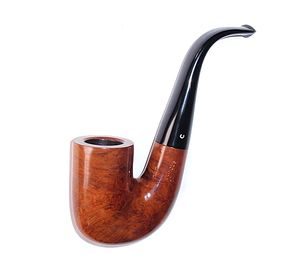
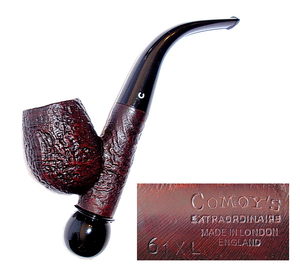

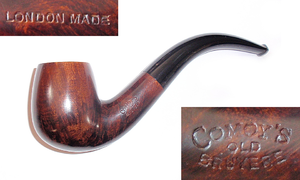
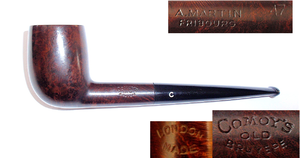
- Catalog excerpts, shape charts, and adds, courtesy Doug Valitchka
- Examples, details, and nomenclature, courtesy Doug Valitchka
Seconds made by Comoy's
Ace of spades, Ancestor, Astor, Ayres, Britannia, Carlyle, Charles Cross, Claridge, Cromwell, Dorchester, Dunbar, Drury Lane, Emerson, Everyman, Festival of Britain, Golden Arrow, Grand Master, Gresham, Guildhall, Kingsway, Lion's Head, Lord Clive, Lumberman, Hyde Park, Lloyds, Mc Gahey, Moorgate, Newcastle, Oxford, O'Gorman, Royal Falcon, Royal Guard, Royal Lane, Scotland Yard, St James, Sunrise, Super Sports, Sussex, The Academy Award, The Golden Arrow, The Mansion House, The Exmoor Pipe, Throgmorton, Tinder Box Royal Coachman, Townhall, Trident, Westminster, Wilshire
- Second examples, details, and nomenclature, courtesy Doug Valitchka
